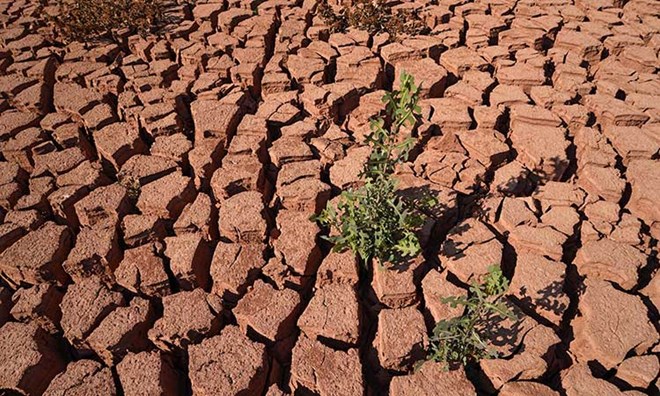Gulf Today
Monday February 14, 2022
Thousands of people from rural Somalia are walking hundreds of kilometres to reach Mogadishu, capital of Somalia, to escape hunger. Save the Children survey in November showed that families are regularly going without meals in 15 of the 18 regions in Somalia.
The government in Mogadishu, capital of Somalia, declared a humanitarian emergency in November and the UN’s World Food Programme (WFP) warned that 13 million people in Somalia, parts of Ethiopia and Kenya, face severe hunger in the first quarter of 2022.
It said that $327 million is needed to look after the immediate needs of 4.5 million people in the next six months. The region has been ravaged by a succession of droughts.
Save the Children in a statement attributed the problem to “prolonged droughts in quick succession”, increase in food prices, fall in remittances from Somalians working abroad, and political uncertainty.
The Somalian government is trying to cope with the crisis. Food is offered in camps for the displaced people, and hospitals in Mogadishu are dealing with malnutrition cases. Abdullahi Osman, head of Hormuud Salaam Foundation and a member of Prime Minister Mohamed Roble’s drought task force, says that there are not enough humanitarian agencies on the ground to deal with the situation. The tale of the hungry people who walked hundreds of kilometres to escape drought and hunger is heart-rending.
Says Faduma Ali, who walked 500 km to reach the camp on the outskirts of Mogadishu, “We had no water and our livestock had perished and when I lost everything I walked the road for seven days.” Somalia has been facing economic distress for nearly 30 years. The famine in 1992 where children died of hunger moved the world to rush food supplies to the country. In the drought-induced famine of 2011, 250,000 people died, mostly children.
Malnutrition is a major medical problem. Dr Abdirizaq Yusuf, director of Martino Hospital in Mogadishu, says, “Due to the increased cases of acute malnutrition the hospital now employs specialist doctors and nutritionists who help those most affected.
A large number are from remote regions of Somalia and now live in camps.” The humanitarian crisis in Somalia is threefold. There is the drought, the distress of the people who are forced to flee their villages, and the health hazards caused by hunger.
The November survey of Save the Children also revealed that 700,000 camels, goats, sheep and cattle died over a two-month period due to the drought.
The situation in Somalia becomes more critical because of the political confrontation between President Mohamed Abdollahi Mohamed and Prime Minister Mohamed Hussein Roble. In the last week of December, President Mohamed suspended the powers of Prime Minister Roble on suspicion of corruption.
The prime minister described it as a coup attempt, and troops loyal to the leader took positions in Mogadishu. Though there has not been an outbreak of violence, people in the national capital are apprehensive. The simmering tension between the top two political functionaries will only make things worse on the drought and hunger front.
It is reckoned that in the last decade, Somalia has experienced three acute droughts in 2011, 2016 and 2021.It is not clear as to why the Somalian government and world bodies like the World Bank do not have a long-term plan to deal with the recurring droughts. There is however the dire projection that droughts in Somalia are going to occur more frequently than before, and this is being blamed on climate change.
What is needed is a short-term, medium term and a long-term plan to tackle drought and famine. And it needs a stable political set-up to pursue sustained policies to prevent droughts.